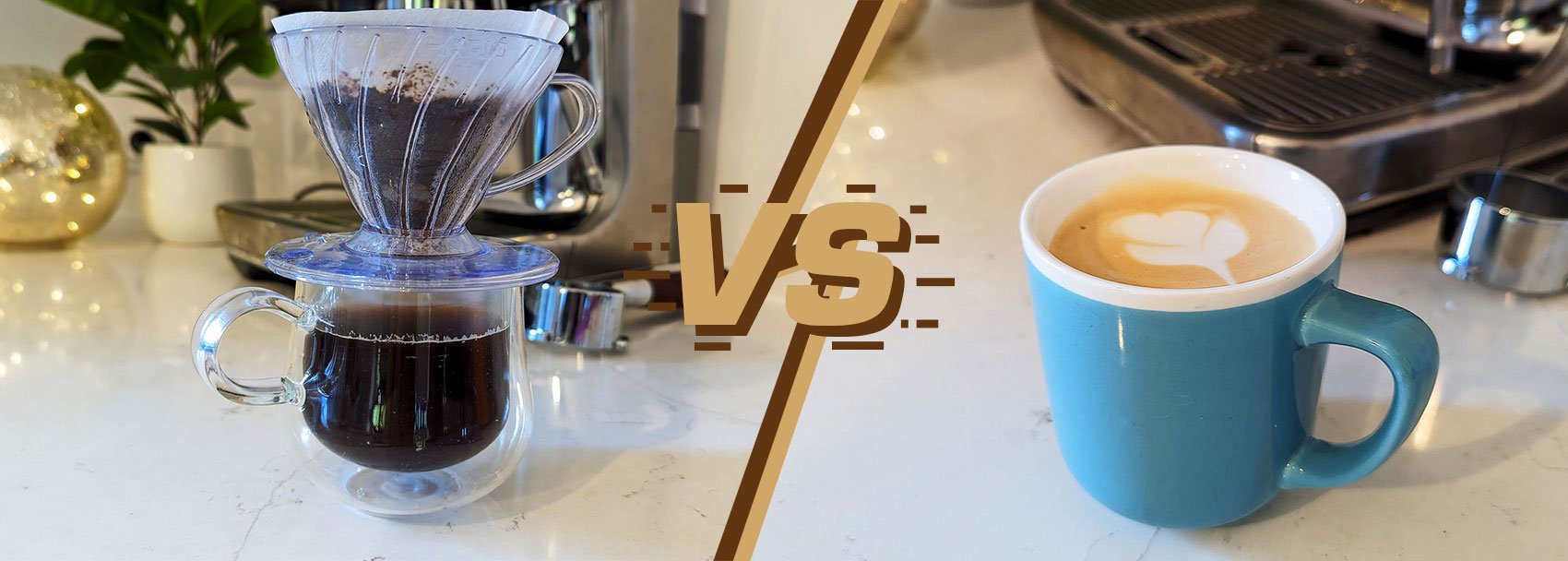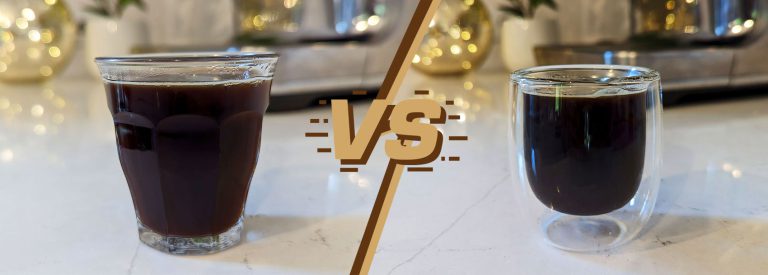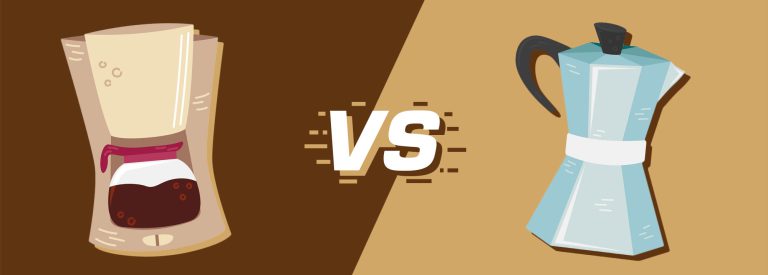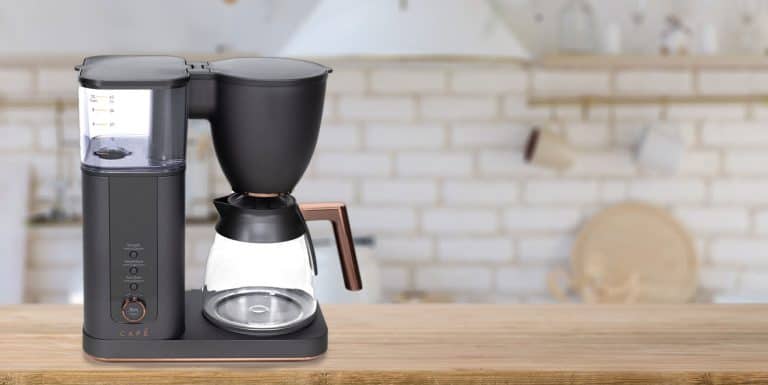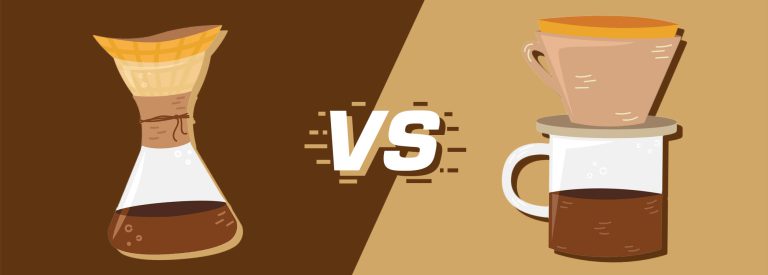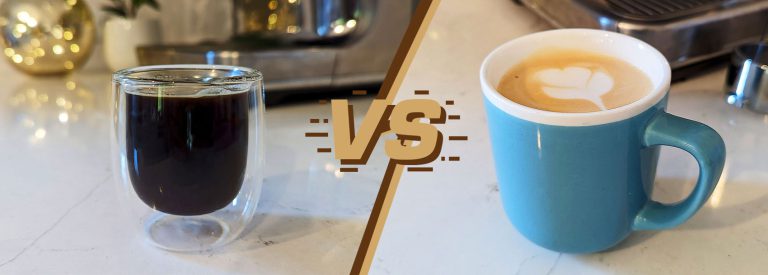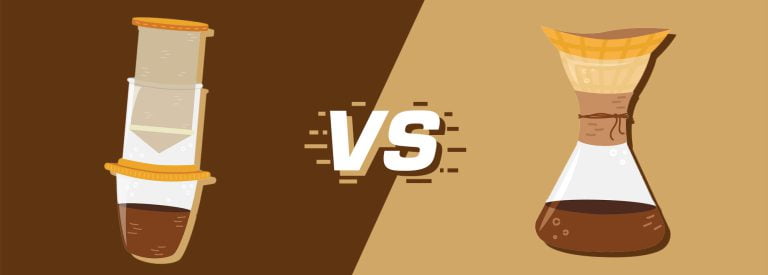Drip Coffee vs Latte: A Detailed Comparison of Two Famous Brews
Drip coffee and the Café Latte are 2 of the most popular coffee drinks across the globe, but not everybody is 100% clear on how these two drinks differ.
No worries though, you’re in the right place. In this guide, I’ll discuss each drink’s specifics such as their ingredients, prep methods, ratios, flavors, and more.
Key takeaway: What’s the difference between a Latte and Drip Coffee?
Drip Coffee is brewed with a coffee-to-water ratio of 1:16 to 1:17, resulting in a light, watery texture with a clean, straightforward taste that allows the subtle nuances of the coffee beans to shine through. In contrast, a Latte uses an espresso base combined with 3 to 6 parts steamed milk, offering a creamy and smooth espresso+milk drink.
Now for those of you interested in the details of each, read on.
What is Drip Coffee?
Drip coffee (aka filtered coffee and pour-over) has been around since the earlier parts of the 20th century in its present-day form. Making it involves pouring hot brewing water over ground coffee beans and, using gravity, letting the liquid coffee drip through a filter into a cup or pot. The final product is a light and watery coffee that is served in millions of diners, especially in the US.
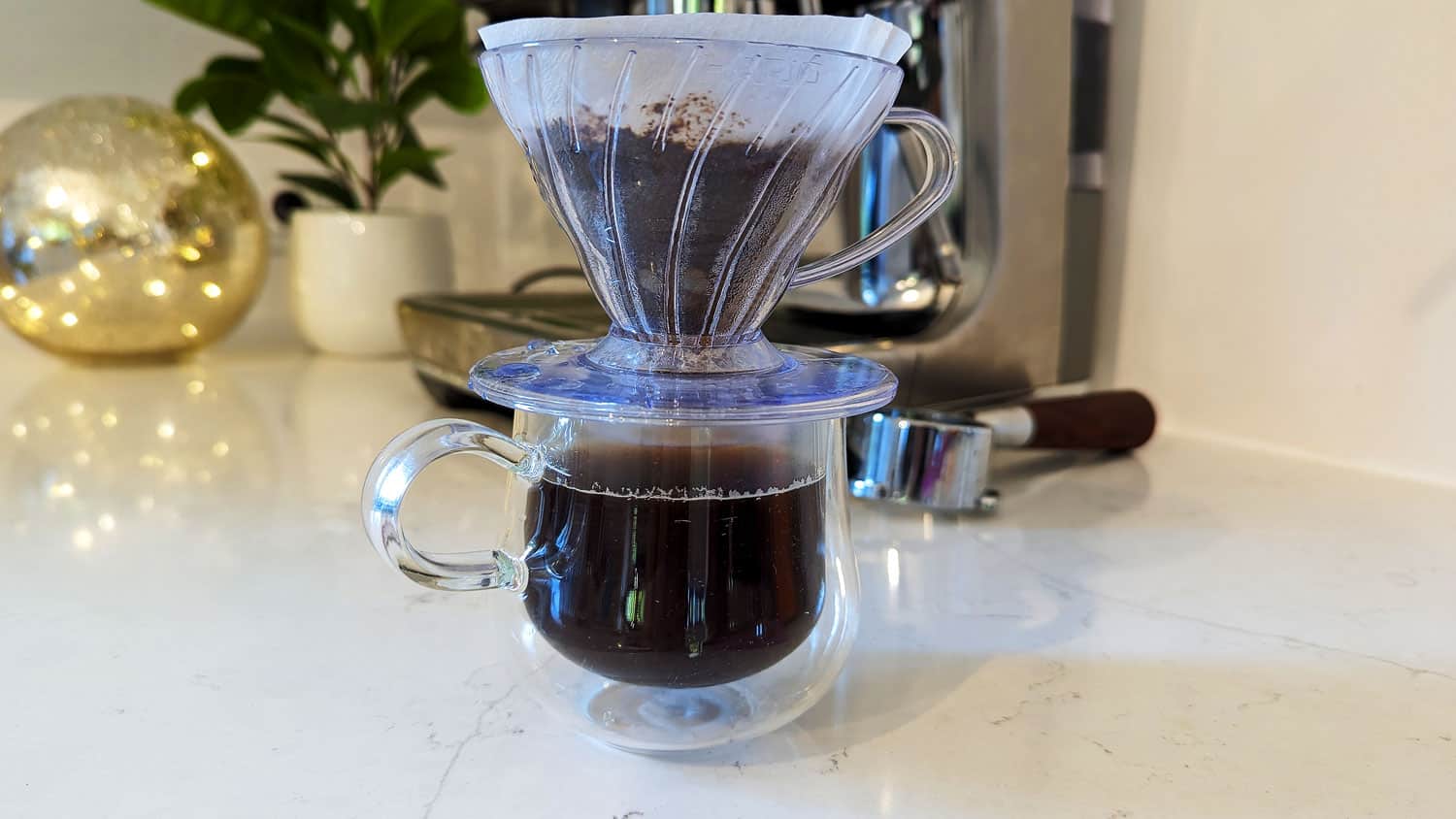
The coffee-to-water ratio you use for drip coffee is 1:16 to 1:17, which you might have heard being called the Golden Ratio. So for example, for a typical 6oz serving, you need 10g of coffee. Each serving comes with 50-90mg of caffeine and a “whopping” 2 calories.
The flavor of drip coffee is much milder than espresso-based beverages. It has a clean and straightforward taste, allowing the subtle nuances of the coffee beans to shine through. Depending on the beans, roast level, and grind size, drip coffee can have notes of citrus, chocolate, or even floral undertones.
Here’s a quick guide on how to make it, but for more details, you can check out my full article on how to make drip coffee.
- Grind your coffee to medium coarse.
- Add water to your machine’s reservoir.
- Securely place your filter and introduce the coffee grounds.
- Press the “brew” button and await your drip coffee.
Now let me explain what a latte is.
What is a Latte?
The Italian term ‘Caffé Latte’ essentially means ‘coffee with milk’, which perfectly describes this drink. This espresso-based beverage gained global fame, mainly in the 80s, with its popularity seeing a steep increase as baristas began flaunting their latte art skills.
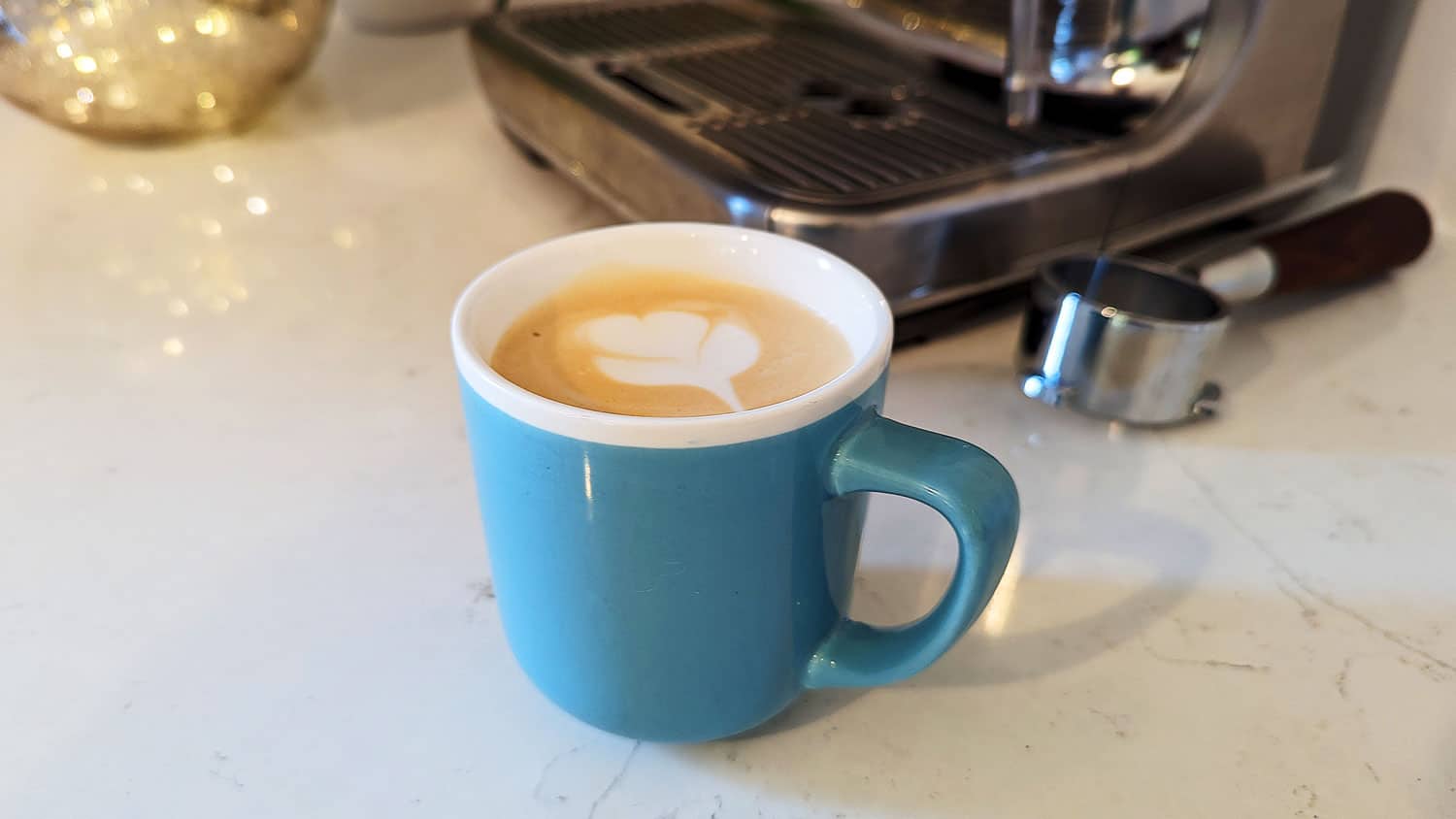
The latte begins with a regular espresso as its base, prepared with a brewing ratio of 1:2 to 1:3. A single shot needs 7g of coffee grounds while a double shot would require 14g (in the case of third-wave coffee, these measurements would be 9g and 18g respectively). The next step involves combining the espresso with 3 to 6 parts steamed milk that has a thin layer of microfoam on top.
A latte serving can range between 5 to 16 oz (150-480 ml), the go-large sizes only being served at places like Starbucks. Each espresso shot used contains 60-80mg of caffeine and increased calorie content of 128 calories per 240ml latte thanks to the milk.
Although most baristas use whole milk for lattes, substitutes like almond or oat milk are also suitable. Soy milk is my personal favorite – not because it’s lower in calories but because I love its unique flavor.
Now how does it taste? A Café Latte offers a creamy yet subtle flavor profile. The robust intensity of the espresso blends smoothly with the sweetness and creaminess of steamed milk and the thin microfoam topping.
Making a proper latte is not that easy, as you need to dial in an espresso, and get the hang of steaming milk. Here are the basic steps:
- Start by preparing a single or double espresso.
- Fill a steaming pitcher with cold milk up to the spout’s base.
- Heat and aerate the milk till it’s around 160 degrees Fahrenheit, ensuring a silky texture.
- Pour the steamed milk over your espresso.
- You can add latte art over your cup if you like.
You can read my Caffé Latte recipe for more in-depth instructions.
Comparing Drip Coffee & Latte
To better understand the distinct characteristics of the two coffees and how they compare to each other, refer to the table below:
| Aspect | Drip Coffee | Latte |
|---|---|---|
| Taste and Texture | Mild flavor, clean taste, light and watery texture | Creamy and mild flavor, smooth and velvety texture |
| Coffee-to-Water Ratio | 1:16 | Espresso: 1:2 to 1:3 |
| Ingredient Ratio | Just coffee | 1 part espresso, 3-6 parts milk, & thin microfoam layer |
| Typical Serving Size | 6 oz (180 ml) | 5 to 16 oz (150 to 480 ml) |
| Caffeine Content | 50-90 mg per 6oz cup | 60-80 mg per 1 oz shot |
| Calories | 2 calories per 6 oz cup | 240 ml latte has 128 calories |
| Acidity | Generally moderate acidity | Low to moderate acidity |
| Brewing Difficulty | Easy | Home barista |
| Bean Roast | Light to medium roasts | Medium roasts; dark roasts also work |
Now, here’s a more detailed comparison:
- Ground Coffee Weight & Ratios: Drip coffee uses 10g of coffee grounds for a 6 oz serving, which follows a brew ratio of 1:16 to 1:17.
Meanwhile, the latte uses an espresso base that is brewed with 7g for a shot and 14g for a double shot (9g and 18g respectively for third-wave coffee) with a ratio of 1:2 to 1:3. - Taste: While the latte’s espresso is a potent brew, drip coffee is more subdued and fluid. Drip coffee offers citrus, chocolate, or floral undertones in its clean yet straightforward flavors. Latte maintains the robust taste of espresso but blends it with the creaminess and slight sweetness of milk.
- Volume, Calories, & Caffeine: A drip coffee’s serving is at 6 oz which can hold 50-90mg of caffeine and 2 calories. Lattes come with similar caffeine when you use a single shot of espresso, but about 128 calories per 240ml, depending on the type of milk you us.
- Bean Roast: For drip coffee, I lean towards light to medium roasts for their bright and nuanced flavors. For lattes, medium roasts harmonize well with milk, though occasionally I brew with dark roasts for that added depth. But I would not use a dark roast for drip coffee.
- Steamed Milk: Drip coffee does not use milk, but lattes do. Aside from whole milk, you can also top your latte with alternatives like soy, almond, or oat milk.
- Serving Suggestions: Drip coffee complements breakfast nicely, and seasonal variations such as cinnamon coffee are comforting in the fall. For my lattes, I have a soft spot for soy milk, not for its lower calorie count but purely for its unique flavor.
As you can see, the two drinks really differ. Drip coffee is smooth and clean with a watery texture, while the latte blends the robust espresso and creamy milk resulting in a silky drink. While both coffees cater to different palates and moods, people around the globe have shown their love for both drinks through the years.
I love my espresso, that’s why between the two, I prefer latte more than drip coffee. The balance between the strong espresso and the creamy milk offers a comforting cup, especially during a slow afternoon. Let me know which coffee drink you like better in the comments section below!

